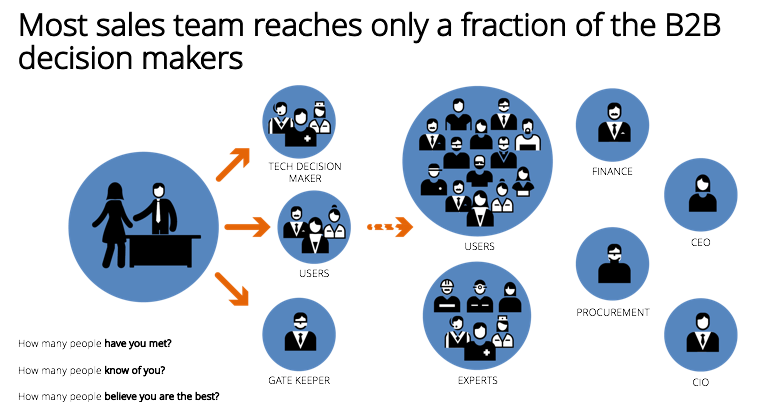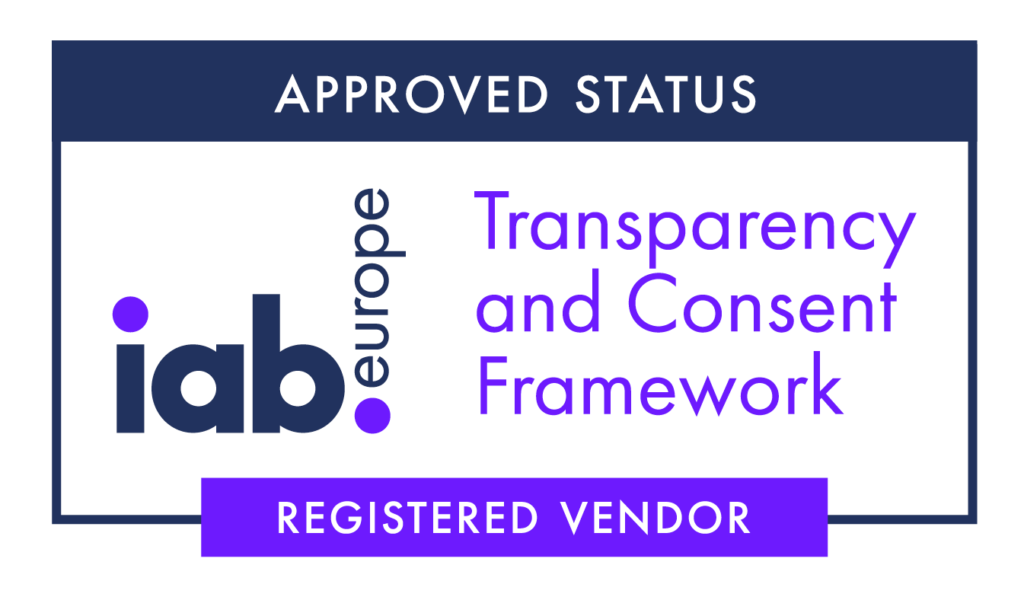Average buying centre size in companies with 1.000+ employees consists of over 30 employees. On such a scenario, how should Sales and Marketing work together to close the big deals? What is Account IP Targeting and why B2B Display Advertising can help? How do you make sure you score 20/20 on Awareness, Confidence and Trust?
Not only the size of the buying group is significantly more complex. If your size deal is very high, making your customer feel safe will be a critical factor in your selling cycle.

As identified by Gallup “a recent study in Germany, for example, looked at the purchase decisions made by buying centre members in mechanical engineering, electronics and automation industries. Almost eight in 10 decision-makers (77%) indicated that they disregarded emotions when making purchasing decisions, while seven in 10 (70%) claimed to rely only on objective facts. However, a majority of the respondents (54%) also said that they would let a deal fall through if they had a “bad feeling” about it, despite favourable facts.
These findings suggest that the final decision isn’t a purely rational choice, even among German technical and engineering purchasers.”
Not only the size of the buying group is significantly more complex. If your size deal is very high, the risk/ complexity will be a critical factor in your selling cycle.
It is probably easier to sell a set of workstations to a small SBM that to have a 3-year agreement for workstations, warranty and updates with a 10,000 employee company.
The two selling processes will have very little in common.
Decision-Making
The days of a single economic decision-maker are over in most companies and industries. The fact that many executives are not able to make buying decisions on their own comes as a shock for many people used to deal with SMEs. It’s likely that the executive you target and meet, will take the decision to a larger team and then move it ‘upstairs’ to the C-level executives. This is especially true for the larger deals. You may well get a great response, share in some happy back-slapping and hand-shakes, only to find that the decision to buy from you has been reserved at a higher level. So, the key question is how to reach and influence all relevant stakeholders
Last Word
Selling into the blue-chips can be a long, tiring and let’s face it, expensive and complex process. This is why Account-Based Advertising on top accounts is having so much success.
If you want to know more details on what are the best practices in B2B Sales and Marketing to Large Accounts, do get in contact with us. Now it’s time to move beyond the hype.
Listen to our podcasts to learn more about how Account-Based Marketing is shaping the future of B2B marketing:
- Christopher Engman – Author & Managing Partner of Megadeals
- Chris Hirst – Global CEO of Havas Creative
- Riaz Kanani – CEO & Founder of Radiate B2B
- John Harris – President & CEO of Worldwide Partners
- Michel Juvillier – Founder of The Societies Media
- Raffaele Apostoliti – President & CEO at Expandi Group
- Judith Niederschelp – CEO at Demand Studio
- Paul Frampton – President at Control V Exposed
- Luke Bozeat – COO at MediaCom UK
- Natalia Chaban – Digital Performance & Technology Director at MediaCom
- Jim Lloyd-Williams – CEO of Mindshare
- Ricky Abbott – President at Transmission














